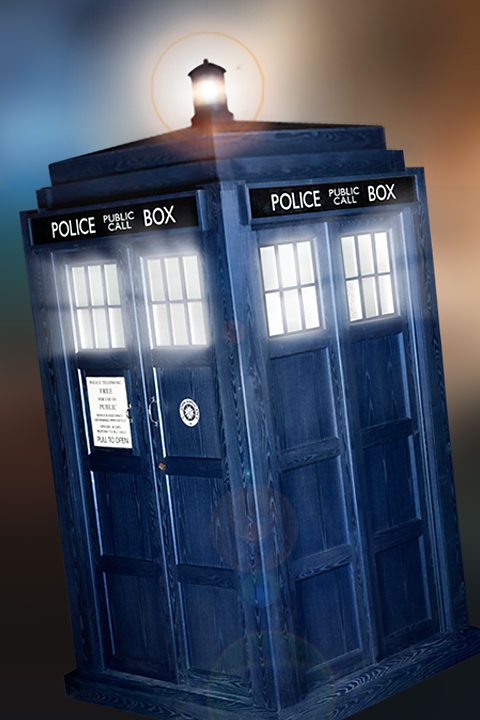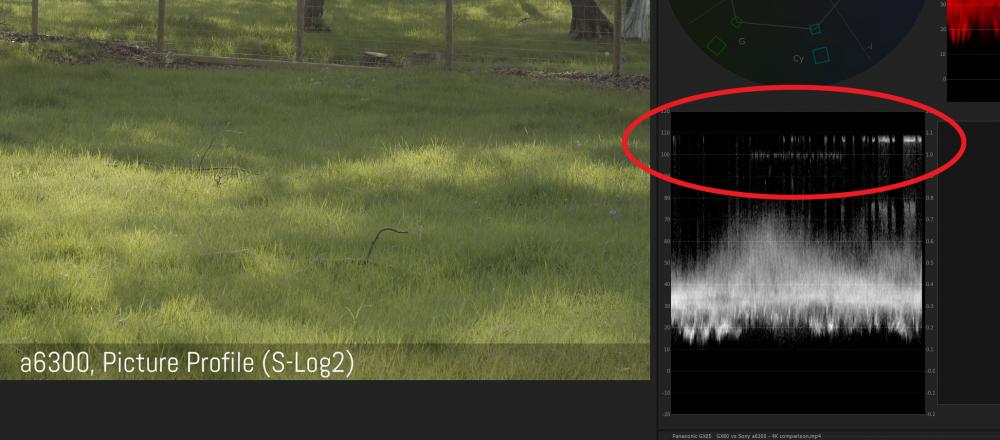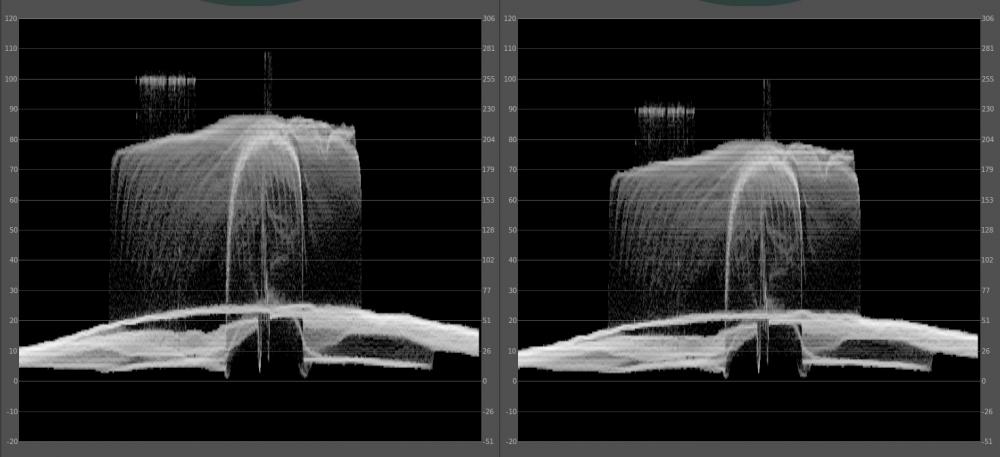-
Posts
227 -
Joined
-
Last visited
Content Type
Profiles
Forums
Articles
Posts posted by Cary Knoop
-
-
7 minutes ago, mercer said:
If you want 23.976, you set it to 60hz or 59.95 hertz to be exact.
I am not familiar with this camera but does it wrap the 23.976p signal into a 60i signal as some old model cameras still do?
If so you have be careful with editing your footage, if you do it right you get back a clean 23.976p video but if not it will be a blended or interlaced mess.
If you upload a second of video using 23.976 we can verify if that is the case.
-
6 minutes ago, mercer said:
So, you think even if shooting 24p, it should be converted to 23.976?
It depends on the destination media.
For broadcast you would probably have to deliver to 60i (although ATCS does have a 1080p24 standard to be converted to 60i during broadcasting but it is almost never used). So in that case you would have to start with 23.976.
For Blu-ray you should render 24p instead of telecine it to 60i.
I really do not know what you mean by 60hz.
-
24 minutes ago, liork said:
E-M1 Mark II vs A6500 ibis test 1080p:
Levels from the Sony recording are clipping, it takes the blue out of the sky.
It is disconcerting to me how many people do not seem to realize you should not output a video with levels outside the 16-235 range.
-
Just now, mercer said:
Or do you mean by having it at 60hz it is easier to go in and out of 23.976 and 60p?
I don't understand what you are asking here. How did the 60p get in the picture?
Generally to convert I would do the following:
Change between 24p and 23.976p
This is relatively easy, you just slow down or speed up your footage in your favorite editor. For short scenes you do not need to adjust the speed of the audio but for longer scenes you have to. You resample the audio, this is a perfectly harmless operation, typically you can, but do not need, to maintain pitch because the speed change is very low.
Change from 24p (and 23.976p) to 60i
This process is called telecine and is relatively harmless but still it does degrade image quality. For this you need to slow down 24p to 23.976p and then you turn every second of video into 3 fields (fields are half frames). The result will be interlaced video. You could optionally frame double that to 60p.
Change from 24p to 25p
You speed up the 24p to 25p. This does have an impact on the duration of the video but it is the only option that does not severely impact image quality. You need to resample the sound and have to remain pitch (the pitch change is much more noticeable to your ears than the speed up).
Change from 60i or 60p to 24p or 23.976p
This is a bad conversion and should be avoided at all cost.
Deinterlacing video
Always use frame doubling, your result will be much better. So convert 50i to 50p not to 25p and convert 60i to 60p not to 30p.
Generally I would advice to avoid blending, repeating or removing frames unless there is absolutely no alternative, because you image quality will degrade.
. -
52 minutes ago, Andrew Reid said:
Can't fault Canon's lenses, although Sigma EF mount lenses are often better value for money.
I agree.
What Sigma understands better than anyone else is that there is a real need for lenses specially designed for crop sensors, and most video cameras that use the EF mount are crop sensor or smaller. A lens specially designed for a crop sensor has a better resolution than a full frame lens if all other factors are similar.
-
No, for other features it does not make any difference.
Also it is easy to go from one speed to the other by speeding up or slowing down the footage. However if your footage is long you would want to resample the audio to match the speed adjustment.
-
19 minutes ago, jonpais said:
This is exactly what I'm talking about. Forget the scopes for a moment. If the Lumix were exposed for the highlights to maintain the detail that is lost, the shadows would have been crushed. And low light sensitivity has absolutely nothing to do with focal length. Finally, it is a well-known fact that Panasonic inflates their ISO figures, whereas Sony's are closer to the genuine ISO. According to your own criteria, Sony would blast the Panasonic out of the water. But I really don't want to talk about specs any more. All I care about is the final image quality, and things like AFC ability. And here Sony smokes Panasonic.
I am talking about doing exact and objective tests.
Your comments do not in my opinion and no I do not forget scopes, they are essential!
-
1 hour ago, jonpais said:
I guess seeing is not believing... I just finished watching a test comparison between the GX85 and the Sony a6300, concerning rolling shutter, high ISO performance, dynamic range, 1080p, continuous focus - and I thought the a6300 just killed it, leaving the Panasonic in the dust in all but IBIS (the a6300 didn't have IBIS). Yet almost 100% of the comments preferred the G85 to the Sony. One viewer even said that 4K was a fad. Slog was able to maintain so much more detail in the highlights and shadows, whereas the GX85 lost detail in both. One reader, seeing the exact same video I was watching, and unable not to see the enormous difference in dynamic range, was still unsure which camera would be better for video. The test was not about battery life, overheating, user interface or price, just image quality. While reviewers can be disparaged at times for not being photographers (some don't even own a camera!), being biased, or in the pay of this or that manufacturer, I think often the readers are most to blame. They are so unsure and desperate, they just want opinions, rather than actually being able to judge image quality by themselves. The problem is, very few reviewers are good photographers, and simply shoot a bowl of fruit or a wine bottle for testing purposes, whereas I don't shoot those subjects. I don't shoot test charts either. I'm sure everyone at EOSHD owns a lens that maybe doesn't score high over at DxO, but every time they use it, it's magical. I admire Mathieu Gasquet, because he shoots subjects I encounter every day - people and nature - and he does it well. One other thing so many of these so-called reviews focus on that I absolutely loathe is features. Thousands of shots of AFC and so on - but at least they are sharing shots instead of just voicing an opinion. I think too many readers are overly concerned about features rather than handling and image quality. I never used 1/10th of the features on my GH3, GM1 or GH4. I just want a camera that shoots magnificent video at 24fps.
That video has out of range highlights both for the Panasonic and the Sony, even the ungraded log footage has it.
I think that if you make comparative test you should be very accurate and make sure your levels are correct and that you match exposure based on the scopes because an ISO value in one camera brand is not necessarily the same as in another brand and unless you compare T-stops for lenses you also have to account for differences even with the same F-stop.
The train comparison uses lenses with different focal lengths and apertures.
- Cinegain and John Matthews
-
 2
2
-
-
4 minutes ago, zetty said:
Thanks for the explanation. So I guess the "overhead" values that the camera records must be in the 235-255 range, meaning it is in fact recording up to 255 but marking the files as 16-235 (which is the 100% for the format).
Yes, exactly!
The Panasonic GX80/85 is not the only one, I think the many of the Sony cameras do a similar thing.
Always check when you edit clips with video levels for out of range values!
-
2 hours ago, zetty said:
So from what you said, GX80 does actually record 16-255 or 0-255, and Premiere maps it as if it was 0-235 or 16-235.. which seems to be an incorrect interpretation of the data as what's the point extrapolating 235 to 255 and the real values in that range put beyond 255.. 255 is still "illegal" for broadcast anyway.
No, Premiere Pro interprets the information just fine. Many cameras do record out of range values for overhead. By the way Davinci Resolve will do the same with video levels. In Resolve you also would need to bring down the overhead values into legal. But Resolve does not have the 'Clamp Video Signal' so you have to look and see if there are out of range values. You could as an alternative force data levels in Resolve. I would recommend always to check for overhead when you are dealing with video levels.
The values in the scopes are just scales superimposed on the data. If that confuses you I would recommend to only look at the percentage/IRE scale on the left.
If you import multiple clips where some are video and others use full range Premiere correctly maps all of those onto the 0-100% scale. But out of range values (which obviously are not possible for full range) will be mapped outside of that range. Which means that levels outside the 0-100% range need to be brought into legal range.
-
GH5 Prototype
In: Cameras
1 hour ago, studiodc said:This is true, but the monitor refresh rate doesn't change just because you're playing a video on it.
Not if you setup your system properly.
There are several ways to change it based on the footage. I use madVR but there are alternatives as well.
And obviously for professional editing and coloring you should use at least two monitors. One for the UI using the GPU and another one using a dedicated video card like the Decklink for the actual Video output.
-
GH5 Prototype
In: Cameras
26 minutes ago, studiodc said:I can definitely understand what you're talking about - but that's not something I would at all class as "motion cadence", which to me implies a) regularity in frame exposure duration and b) regularity in frame exposure timing. Judder is a big factor here - the playback interpolation of frames during 24p -> 60p telecine pulldown to match most modern monitor refresh rates makes a far bigger difference in the viewer's perception.
Modern monitors should have no problems using refresh rates for 24p or 23.976p.
-
1 hour ago, zetty said:
How it is possible that the GX80 records values beyond 255? That's more than 8 bits. Or does Premiere map 0-255 or 16-255 as if it was 16-235, pushing the values above 235 beyond 255?
The GX80/85 does not record values beyond 255, it outputs video levels (16-235) but it also records levels outside this range as overhead.
Premiere Pro maps both (legal) video 16-235 levels and full range RGB levels to 0-255 as it internally processes all video as RGB. Illegal levels will be outside of this range and thus you can have values outside the 0-255 range.
-
GH5 Prototype
In: Cameras
13 minutes ago, Zak Forsman said:there's a few threads on this site (and others) that cover the topic in-depth if you'd like to learn about it.
Apart from a global shutter I do not know of any cadence differences with respect to the GH4, so as long as it is real and not crackpot "filmic" science I would certainly want to learn about it.

-
GH5 Prototype
In: Cameras
11 minutes ago, Zak Forsman said:...more cinematic motion cadence of those cameras. .
What is a 'more cinematic motion cadence'?

-
GH5 Prototype
In: Cameras
5 minutes ago, Emanuel said:For sure. But, as same as happens with plots or subplots within an inner theme, we're talking about cameras, our POV into this topic, not yachts, jets, jetpack, trips to Mars, right? ; )
E :-)
Yachts: Too expensive!
Jets: Too fancy!
Jetpack: Too dangerous!
Trip to Mars: Too exotic!
Panasonic GH5: Just right!
-
4 minutes ago, kidzrevil said:
Do you apply that before you start grading or after ? I've tried this before and recovered highlights but I am not sure if it is compressing from 0-255 to 16-235 and then stretching it back out to 0-255 on export. Huge mystery I hope someone can explain to me !
Exporting using RGB (full range) levels only happens when you export with codec options such as ProRes4444 or DNxHR.
Most of the time you will export video levels. Any good NLE will use 32bit or float internal representation so this is not really an issue. I would recommend to always stick with video levels on export unless someone specifically requests RGB.
-
4 minutes ago, Cinegain said:
Sorry bro!
 Wish it was true tho! Now I'll still be tempted to give the E-M1 Mark II a spin first.
Wish it was true tho! Now I'll still be tempted to give the E-M1 Mark II a spin first.
(Have both the GH4/E-M1 now anyways, one's excellent for video production style shooting, the other is a photography workhorse; might replace both with their respective successor)
That's it, I am going to get this and travel in time:


-
-
7 hours ago, Cary Knoop said:
Fredrik, great test but there is a problem with your comparison.
You are actually clipping the highlights in the GX85 scenes. The GX85 provides video levels but does use out of range values for overhead. So in your NLE or color grading application you need to bring the out of range values into legal to compare the shots. If you keep out of range values then a lot of setups will clip the highlights because they expand limited to full range.
Here is the waveform before and after bringing the highlights into legal range.
The 100% values on the left are from the titles but notice there is more highlight information above it. The right side has brought the highlights into legal range and obviously the titles are now too low. For indoor it is not really an issue but if you make a video outside in bright lights the out of range highlights contain valuable information that you should not discard.
I made a small tutorial on how to fix this in Premiere Pro for the GX80 / GX85, see the following posting:
-
I made a small tutorial on how to handle out of range video levels in Premiere Pro.
Some cameras record out of range video levels, one of them is the Panasonic Lumix GX85 / GX80 on which this tutorial is based.
Hope this helps and please go easy on me, as this is my first tutorial.

The UHD should be available shortly as YouTube is still processing it.
-
On 12/7/2016 at 8:52 AM, Geoff CB said:
Shot in 2 weeks on a Blackmagic 4.6K and a Sony A7r 2 with Voigtlander Lenses. Aerial video on a DJI Phantom 3. Rip it to shreds!
Great, but why not have a trailer in 4K?
-
I would at least feather the frame of the Star Wars trailer and ideally put it in some kind of monitor that looks like one that is used in the Star Wars movies.
That way your video and the trailer look more integrated.





An adventure into the Panasonic GX85/80 begins - and a look at the Leica Nocticron for Micro Four Thirds
In: Cameras
Posted
Amazing!
From a product marketing perspective I thought that the G80/85 and the GX80//85 were technically too similar to come so quickly after each other. As soon as the G came out the prices of the GX model fell quickly and they keep falling.